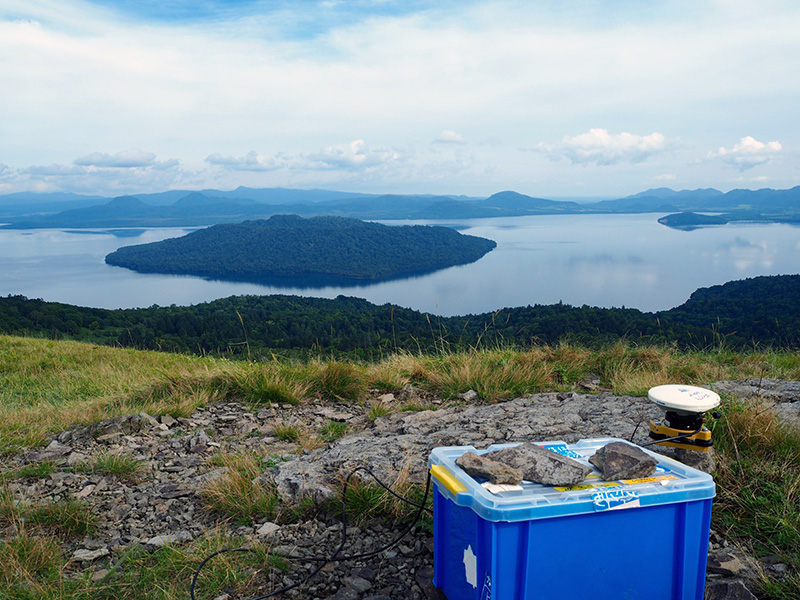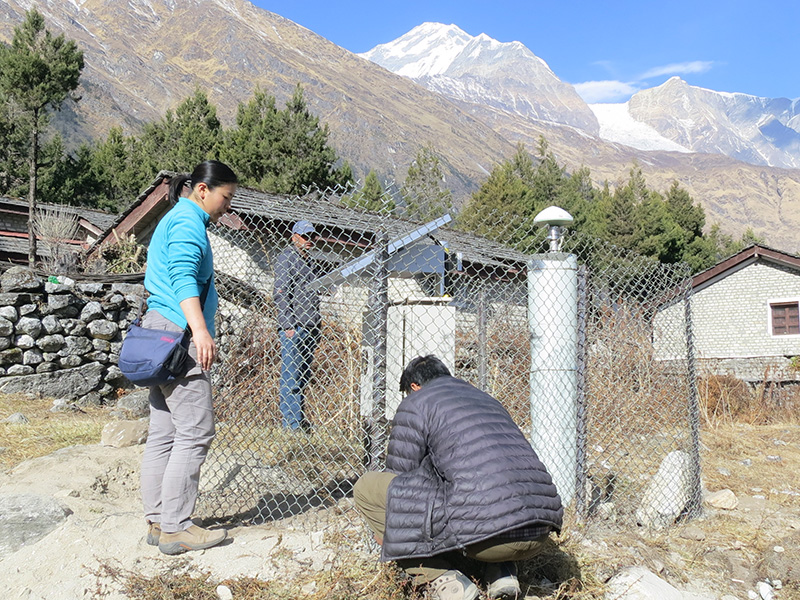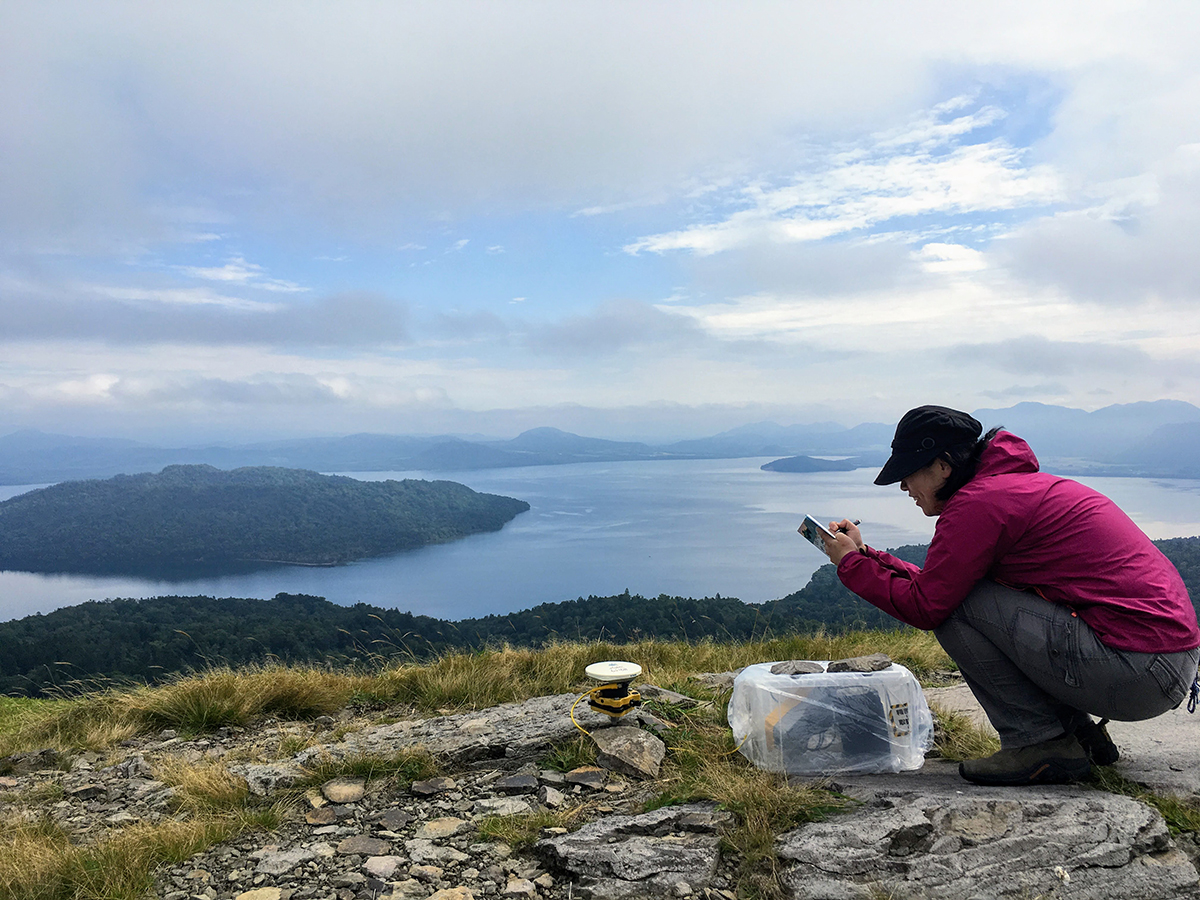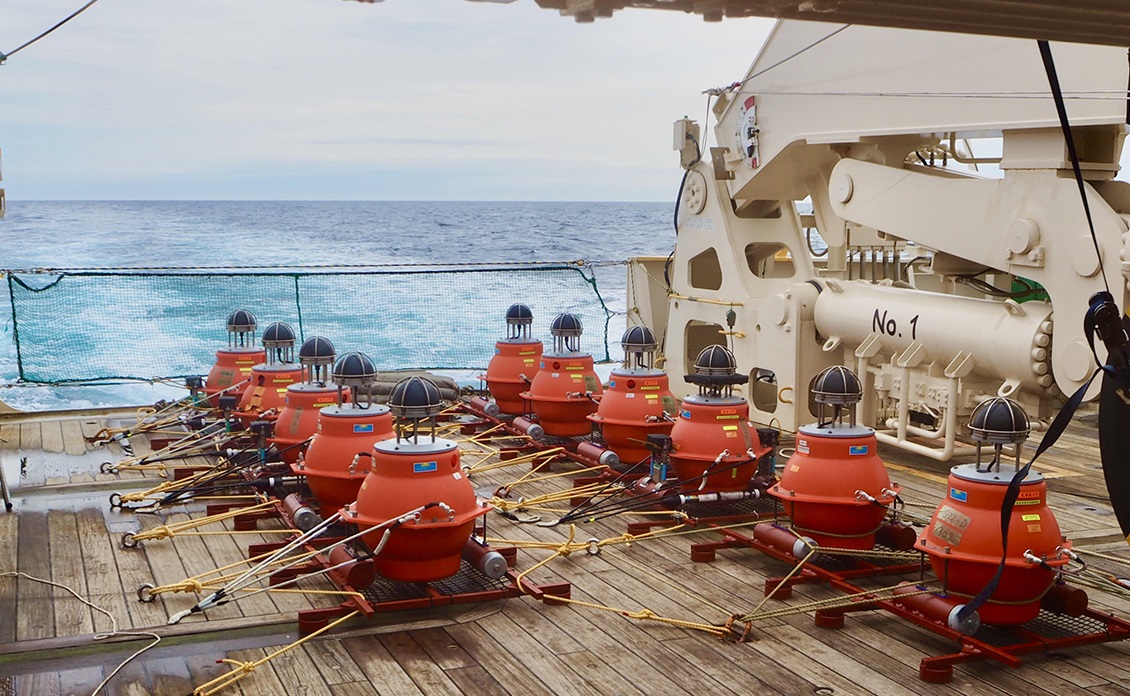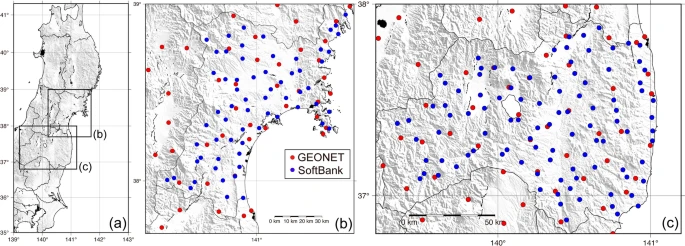OHZONO Mako
Professor
Study of earthquakes and volocanic activities by geodetic approach
Institute of Seismology and Volcanology, Seismological Observation
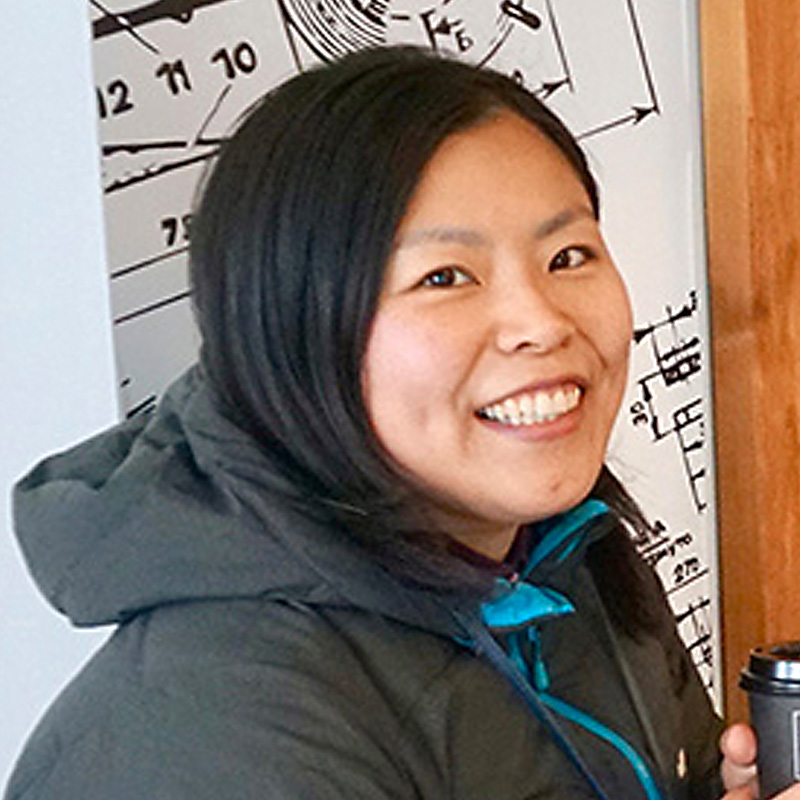
| Theme | Understanding and modeling of seismological and volcanological phenomena and their mechanisms by crustal deformation analysis obtained from geodetic data such as GNSS. |
| Field | Geodesy, Seismology, Volcanology, Geophysics |
| Keyword | Crustal deformation, Earthquakes, Volocanoes, Modeling |
Introduction of Research
Using geodetic data, especially GPS (GNSS, Global Navigation Satellite System), I measure precise crustal deformation in and around Japan. Analyzing this data, I am trying to understand the mechanism of seismological and volcanological phenomena.
I have studied about estimation of the plate motion and uplift induced by the post-glacial rebound in Antarctica, evaluation of fault coupling status on active faults in inland Japan, modeling of coseismic and postseismic deformation and its mechanism assuming heterogeneous rheological subsurface structure, crustal deformation monitoring around active volcanoes, and so on.
Now I am interested in the relationship between slow slip event and seismic activity in inland, the effect of postseismic phenomenon after the 2011 Tohoku-oki earthquake in wide area including Asian continent, crustal deformation around eastern Hokkaido, and the status of crustal deformation field around the Kurile Trench, where will be generate large interpolate earthquake in the future.
I often go field work to obtain original geodetic data to investigate detailed crustal deformation. GNSS observation network in northern Hokkaido is for slow slip event detection, and eastern Hokkaido for monitoring volcanic activity will give me new knowledges. International research collaboration is also important for me. I sometimes go to Nepal to construct GNSS observation network and Kamchatka for volcano research.
Representative Achievements
Potential for crustal deformation monitoring using a dense cell phone carrier Global Navigation Satellite System network,
Earth Planets Space, 74:25, 2022
Spatiotemporal crustal strain distribution around the Ishikari-Teichi-Toen fault zone estimated from Global Navigation Satellite System data,
Earth Planets Space, 71:50, 2019
An intra-plate slow earthquake observed by a dense GPS network in Hokkaido, northernmost Japan,
Geophys. J. Int., 200(1), 144-148, 2015.
Strain anomalies induced by the 2011 Tohoku Earthquake (Mw9.0) as observed by a dense GPS network in northeastern Japan,
Earth Planets Space, 64 (12), 1231-1238, 2012.
Geodetic evidence of viscoelastic relaxation after the 2008 Iwate-Miyagi Nairiku earthquake,
Earth Planets Space, 64, 759-764, 2012.
| Academic degree | Doctor of Science |
| Self Introduction | My original home town is Kagoshima, but I have lived in Shikoku, Tokai and Tohoku regions so far. My hobby is seeing GEONET sites and taking photographs. I like finding and trying something new through field works. |
| Academic background | 2004 Faculty of Science, Kochi University (B.S.) 2006 Graduate School of Environment, Nagoya University (M.S.) 2011 Graduate School of Science, Tohoku University (Sc.D.) 2011-2013 Researcher, Faculty of Science, Hokkaido University 2013-2016 Lecturer, Faculty of Science, Yamagata University 2016-2019 Lecturer, Faculty of Science, Hokkaido University 2020-2022 Associate Professor, Earthquake Research Institute, University of Tokyo 2019-2024 Associate Professor, Faculty of Science, Hokkaido University 2024- Current |
| Affiliated academic society | Geodetic society of Japan, Seismological Society of Japan, Volcanological Society of Japan, American Geophysical Union |
| Room address | Science Building 4 4-203 |

